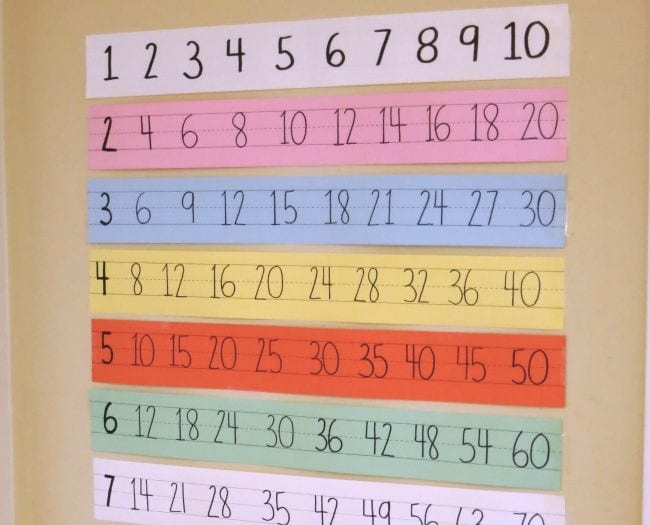- Step 1: Understanding the Concept of Counting by Ones
- Step 2: Introducing the Idea of Skip Counting
- Step 3: Skip Counting by 2s
- Step 4: Skip Counting by 5s
- Step 5: Skip Counting by 10s
- Step 6: Recognizing Patterns
- Step 7: Skip Counting by Other Numbers
- Step 8: Applying Skip Counting
- Step 9: Integration with Other Math Concepts
Have you wondered how to teach skip counting in a way that sticks? This fundamental skill sets the foundation for more complex math concepts.
Math & ELA | PreK To Grade 5
Kids see fun.
You see real learning outcomes.
Watch your kids fall in love with math & reading through our scientifically designed curriculum.
Parents, try for free Teachers, use for free
Teaching skip counting can be straightforward and enjoyable. With the right approach, this essential math skill can be turned into an engaging activity for kids. We’ll walk through practical steps to teach skip counting, starting from the basics and moving up to more advanced levels. By the end of this guide, your students will have a solid understanding of skip counting, ready to apply it in their math adventures.
What is Skip Counting?
Skip counting is counting numbers by adding the same number each time. Instead of counting one by one, you jump or “skip” numbers. For example, when you skip count by 2s, you go 2, 4, 6, 8, and so on. It’s like hopping over some numbers to count faster. This method is especially useful for learning multiplication and division as it helps you see patterns in numbers.
9 Easy Steps to Teach Skip Counting
Step 1: Understanding the Concept of Counting by Ones
Before learning skip counting, it’s crucial that a child grasp the basic concept of counting by ones. This means being able to count individual items, one at a time, up to at least 20. This foundational skill ensures that they understand that each object counts as one unit, a concept known as one-to-one correspondence.
When to Start: Begin when the child shows interest in numbers. This could be as early as preschool age.
How to Do It:
- Use physical objects like blocks or beads. Count these items together, pointing to each as you say the number.
- Use online games to reinforce number counting. This visual and auditory practice helps solidify the understanding that each object is associated with a single count or number.
Begin with these games:
Key Milestones:
- The child can count from 1 to 20 without skipping any numbers.
- They understand that each object counted represents “one” of something.
- Demonstrating one-to-one correspondence by pointing to or touching each object as they count.
Related Reading: Best Counting Activities for Preschoolers
Step 2: Introducing the Idea of Skip Counting
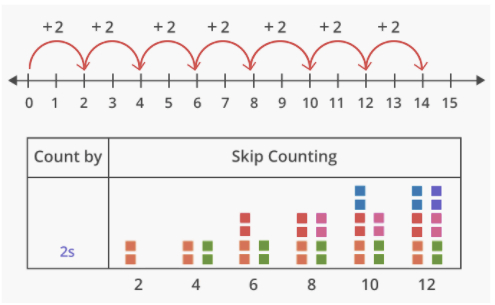
Skip counting is a method that allows us to count faster by moving ahead more than one number at a time. It’s a key step in how to teach skip counting because it introduces children to the concept of jumping numbers in a sequence, which is essential for understanding higher math concepts later on.
When to Start: After the child is comfortable with counting by ones up to at least 20. This is usually after they’ve mastered Step 1 and are ready for a slightly more complex challenge.
How to Do It:
- Use physical objects like blocks or beads. Place them in a line and count out loud, moving over one object to count the next one, effectively counting two at a time. This visual and physical action helps them see and understand skipping numbers.
Begin here:
Key Milestones:
- The child can verbally skip count by 2s, recognizing the pattern of skipping every other number.
- They understand the concept of skipping numbers in a sequence to count faster.
Step 3: Skip Counting by 2s
The goal here is to master skip counting by 2s up to 20. This skill is foundational for future math concepts, including multiplication and even division.
When to Start: Once the child has a basic understanding of skip counting, this could be immediately after they’ve grasped the concept with a few examples.
How to Do It:
- Introduce visual aids like number lines or charts highlighting every second number to reinforce the pattern of skip counting by 2s visually.
- Also, use pairs of objects, such as shoes or socks, to give a tangible example of counting by 2s. This helps solidify the concept through both visual and practical exercises.
Begin here with these fun skip counting games:
Key Milestones:
- The child can confidently skip count by 2s up to 20 using visual aids.
- They can apply the concept of skip counting by 2s to real-life objects, recognizing pairs and counting them accurately.
Step 4: Skip Counting by 5s
Learning to skip count by 5s up to 50 helps children understand patterns in numbers, which is crucial for time telling and handling money. This step introduces a practical application of skip counting that they can see in everyday life.
When to Start: After the child is comfortable with skip counting by 2s. This is a natural progression as the intervals increase, making the concept slightly more challenging.
How to Do It:
- Use a clock face to show how each number represents 5 minutes, making it a relatable example of skip counting by 5s.
- Counting with coins, specifically nickels, can also demonstrate the concept with a tangible object. Each nickel represents 5 cents, reinforcing the counting by 5s pattern.
Begin with these fun games:
Key Milestones:
- The child can skip count by 5s up to 50 using a clock face and coins.
- They understand the practical application of skip counting by 5s in everyday scenarios, such as telling time and handling money.
Step 5: Skip Counting by 10s
Skip counting by 10s up to 100 is essential for understanding the base-10 number system, which is fundamental in math. It simplifies the process of addition, subtraction, and even multiplication.
When to Start: Once the child has mastered skip counting by 5s. This further builds on their ability to count in larger intervals.
How to Do It:
- Group sticks or straws in tens and count the bundles together. This hands-on activity helps visualize the concept of grouping in tens.
- Use a 100 chart to highlight and follow the pattern of skip counting by 10s, which can visually reinforce the sequence.
Understand skip counting by 10s playing these fun games:
Key Milestones:
- The child can confidently skip count by 10s up to 100, both by using physical objects and visual aids.
- They grasp the concept of the base-10 number system and how it applies to everyday math tasks.
Step 6: Recognizing Patterns
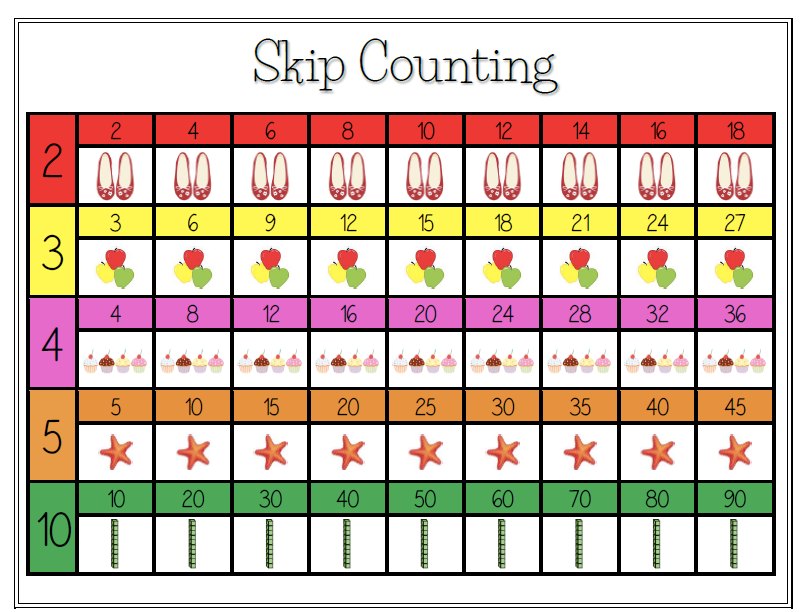
Recognizing patterns in skip counting for 2s, 5s, and 10s is crucial for children to understand the consistency and predictability of numbers. This skill aids in developing a deeper mathematical intuition.
When to Start: After children are comfortable with skip counting by 2s, 5s, and 10s individually. This is the time to help them see the bigger picture of how these sequences interconnect.
How to Do It:
- Use a number chart and color-code the numbers for each skip counting sequence. For example, highlight the numbers used in skip counting by 2s in one color, by 5s in another, and by 10s in a third color. This visual differentiation helps children see the patterns more clearly. Discuss the patterns they observe, such as how some numbers show up in multiple sequences, and encourage them to predict the next numbers in a sequence.
Key Milestones:
- The child can identify and explain the patterns in skip counting by 2s, 5s, and 10s using a color-coded chart.
- They understand the relationship between skip-counting sequences and can predict future numbers in these patterns.
Step 7: Skip Counting by Other Numbers
Expanding skip counting skills to include 3s, 4s, and beyond prepares children for more complex mathematical concepts, including advanced multiplication and division.
When to Start: Once the child has a solid grasp of skip counting by 2s, 5s, and 10s and can recognize patterns within these sequences. This indicates readiness for more challenging skip-counting intervals.
How to Do It:
- Introduce number lines and charts to visualize skip counting by 3s, 4s, etc. Start with smaller ranges to keep it manageable and gradually increase the range as the child’s confidence and understanding grow. This step-by-step approach helps build a strong foundation without overwhelming them.
Key Milestones:
- The child can successfully skip count by 3s, 4s, and beyond within a specified range, using visual aids for support.
- They demonstrate confidence in tackling these new sequences and can apply the concept of skip counting to larger numbers.
Step 8: Applying Skip Counting
Applying skip counting to real-life scenarios and mathematical concepts shows children the practical value of what they’ve learned. It’s a crucial step in how to teach skip counting, making the skill not just a mathematical exercise but a useful tool in everyday life.
When to Start: After children are comfortable with skip counting by various numbers and recognizing patterns. This is when they’re ready to see how skip counting applies outside of practice sessions.
How to Do It:
- Introduce activities that use skip counting for quick addition or subtraction, helping children see how it can speed up these processes. For example, if they need to add 2 + 2 + 2, show them how skip counting by 2s can get to the answer faster.
- Also, use counting money as a practical application, like skip counting by 5s to count nickels or by 10s for dimes, to understand the total amount more quickly.
Begin here:
Key Milestones:
- The child can use skip counting to solve simple addition and subtraction problems.
- They can count money using skip counting, understanding the total value of coins and bills.
Step 9: Integration with Other Math Concepts
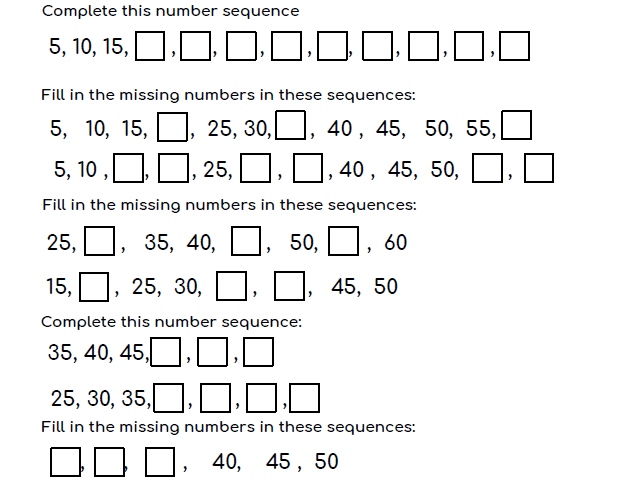
Connecting skip counting with other areas of math, such as multiplication tables and division, is essential for building a comprehensive math foundation. This integration is a key aspect of how to teach skip counting effectively, as it opens the door to more advanced mathematical understanding.
When to Start: Once the child has mastered applying skip counting in simpler contexts. This readiness indicates they can handle more complex mathematical concepts using skip counting as a base.
How to Do It:
- Use skip counting as a strategy to learn multiplication tables. For instance, skip counting by 3s can help memorize the 3 times table. Similarly, show how skip counting aids in understanding division by grouping. If dividing 20 by 4, use skip counting by 4s to see how many groups of 4 make up 20.
Key Milestones:
- The child can relate skip counting to multiplication, using it to learn and remember multiplication tables.
- They understand how skip counting can simplify division problems by visualizing the division as grouping.
Related Reading: How to Teach Division to Kids in 11 Easy Steps
3 Ways to Practice Skip Counting
Regular practice and repetition are essential for mastering skip counting. This approach reinforces the skills, making them a natural part of a child’s mathematical toolkit.
1. Games for Additional Practice
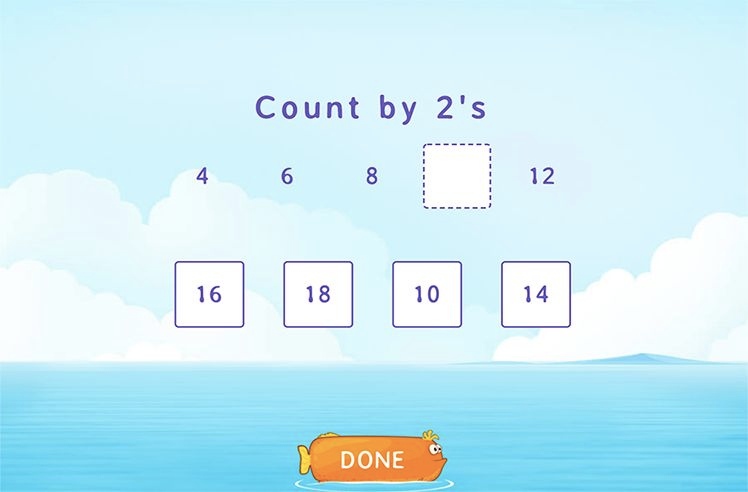
Introducing games that focus on skip counting is one of the most fun ways to teach skip counting. Board games, mobile apps, and online games designed for educational purposes can make learning skip counting an enjoyable experience. These games often present skip counting in various contexts, making the practice more dynamic and engaging.
2. Worksheets for Structured Practice
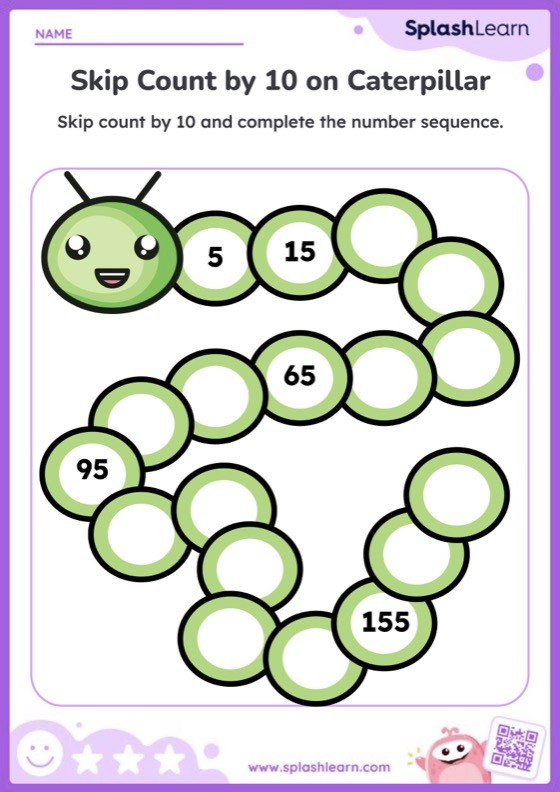
Worksheets offer a more structured approach to practicing skip counting. They can provide a range of exercises that challenge children to apply skip counting in different ways, from filling in missing numbers to solving puzzles that require skip counting to uncover clues. Worksheets are great for focused practice sessions and can help reinforce what children have learned through play and daily activities.
3. Incorporating Skip Counting in Daily Routines and Play
Make skip counting fun in everyday activities. These ideas for teaching skip counting could involve counting steps by 2s on a walk, skip counting by 5s when setting the table, or counting toys by 10s during cleanup. Integrating skip counting into daily routines helps children understand its practical applications and keeps their interest piqued.
Related Reading: Best Math Teaching Apps for Teachers
Conclusion
Mastering how to teach skip counting is a journey filled with engaging activities, practical applications, and consistent practice. By following the steps outlined in this blog, you’ll equip children with a crucial mathematical skill that forms the foundation for many more complex concepts, setting them on a path to success in their math adventures.
Related Reading: How to Teach Multiplication to Kids: 15 Fun Ways
Frequently Asked Questions (FAQs)
At what age should I start teaching my child skip counting?
Start teaching skip counting as soon as your child is comfortable with counting by ones, typically around the age of 5 or 6. Early introduction, with simple, playful methods, lays a solid foundation for understanding more complex math concepts later on.
How can I make skip counting more engaging for my child?
To make skip counting more engaging, incorporate it into games, songs, and daily activities. Use visual aids like number lines and colorful charts, and turn practice sessions into playful challenges to keep their interest high.
How often should my child practice skip counting for the best results?
Consistent, short daily practice sessions are more effective than long, infrequent ones. Aim for 10-15 minutes of skip counting activities each day, integrating them into playtime or routine tasks to reinforce learning without overwhelming your child.

















